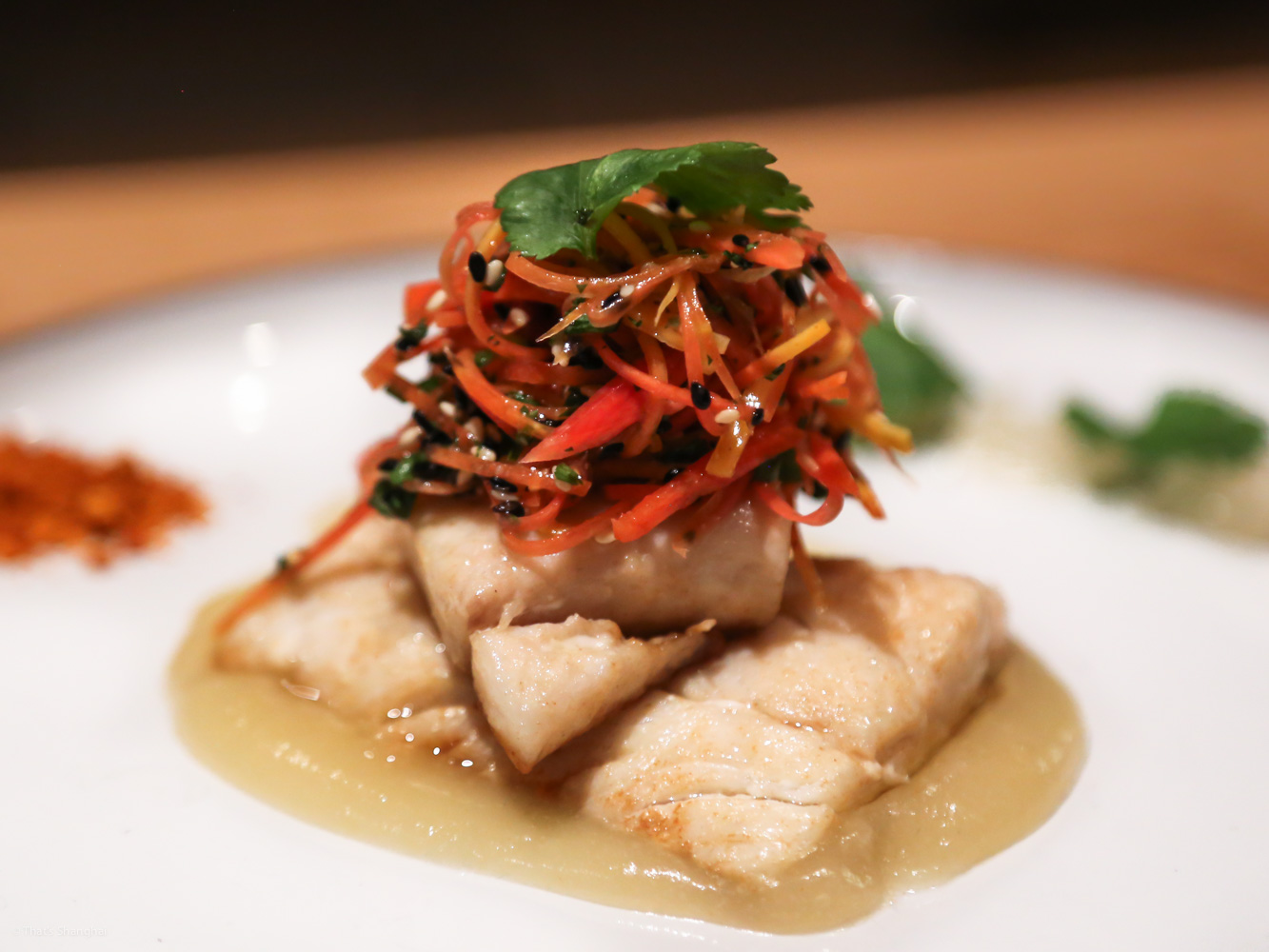The Place
Sharing plates and gastrolounges were the MVP’s of Shanghai dining for the past couple of years, but a seismic change is underfoot, judging by a flurry of ‘contemporary izakaya’ restaurants that have opened. Like last month’s hot ticket, Jeju Izakaya, Oha is also a bar-side eatery, owned by the same folks as Bar No 3. It’s defined by an ever-shifting menu of small plates focusing on local ingredients, a beverage program on equal footing with the kitchen, and most definitively, a bar-like setting.

Similar to the Japanese izakayas from which they are inspired, the rise of these Lilliputian eateries are the product of rental spikes in an increasingly F&B saturated Shanghai, which has forced restaurateurs to rethink the conventional restaurant format into diminutive downtown spaces.
The Food
Our first Oha visit yielded a menu of Guizhou-influenced dishes from a passionate young chef born of the southwesterly province. Among the standouts was a clever reimagining of one of the region’s specialties, lazi ji (森林风格辣子鸡, 'mountain-style' chili chicken, RMB62), which sees two deep-fried chicken thighs nestled with roasted baby potatoes, garlic, konjac root, earthy, roasted chili sauce and fresh tarragon.

A casserole of pinewood smoked kidney beans and pork (RMB58), is hearty and packed with flavor, thanks to doorstep-thick wedge air-dried bacon, delicious minced pork balls and spongy tofu that soaks up its sauce.
Couple it with ‘lard rice’ (猪油哨饭, RMB20) steamed rice topped with crunchy, rendered pork mince and melted fat, for a glorious xiafan (‘rice downing’) experience.

We urge anyone who usually swerves preserved century eggs to try Oha’s, which sees the much-maligned delicacy puréed and topped with blistered bell peppers (RMB22), removing their scary appearance but not flavor.

It definitely needs bread, or at least some of the toasted mantou bun that makes up the air-dried pork belly, sour and spicy pickle ‘mini burger’ (RMB28).

The quality of these dishes prevailed on visit two, by which time Oha’s executive chef, Blake Thornley, was in the kitchen. Thornley, a national finalist in the Australian Young Chef competition, is a newcomer to Shanghai, having come from celebrated Bali restaurant Mosaic.
It’s obvious which of Oha’s dishes belong to him. Though they too make use of local ingredients, they bear the indelible mark of a classical French education. Rillettes, for example, fashioned from a locally-sourced spicy smoked pork, and served with grilled mantou slices, fermented chilies and sweet pickled carrots.

Among Thornley’s successes were skillfully charred shrimps, batons of smoked tofu tempura, tenderly blanched Chinese kale and, in a nod to his Indonesian tenure, crumbled tempeh (deep-fried fermented soybeans, RMB92).

Seared sea bass fillets (RMB110) with pickled carrots and pomelo purée (rind included) further demonstrated a daredevil approach to flavor pairing. This ingenious, and apparently laborious sauce was a perfect elevation for the fish: subtly sweet, floral and zesty.

Charcoal-grilled beef tongue slices layered with watermelon radish slices and leeks was both beautiful and delicious (RMB38).

Not every dish is stellar, but nothing was regrettable. Grilled calamari, fried tofu skin with ‘meat,’ crispy dates with a far too sweet chocolate sauce, cauliflower and celery leaves, and crispy potato cake were comparatively unremarkable.

Food verdict: 2.5/3
The Vibe

As you can tell, we’re fans of Oha, but there’s no denying it’s a Marmite restaurant: you’ll either love it (as three of our party did) or, like one of our party, find it far too complicated. If you’re content with big portions and simpler ingredients, give Oha a miss, but if keen on seeing where this slightly wild experiment with Chinese flavors and two clearly passionate chefs will go, schedule a visit ASAP.
Vibe verdict: 1.5/2
Total Verdict: 4/5
Price: RMB200-350 per person
Who’s going: locals and expats
Good for: curious eaters, dates, natural wines
See a listing for Oha
Read more Shanghai Restaurant Reviews























0 User Comments